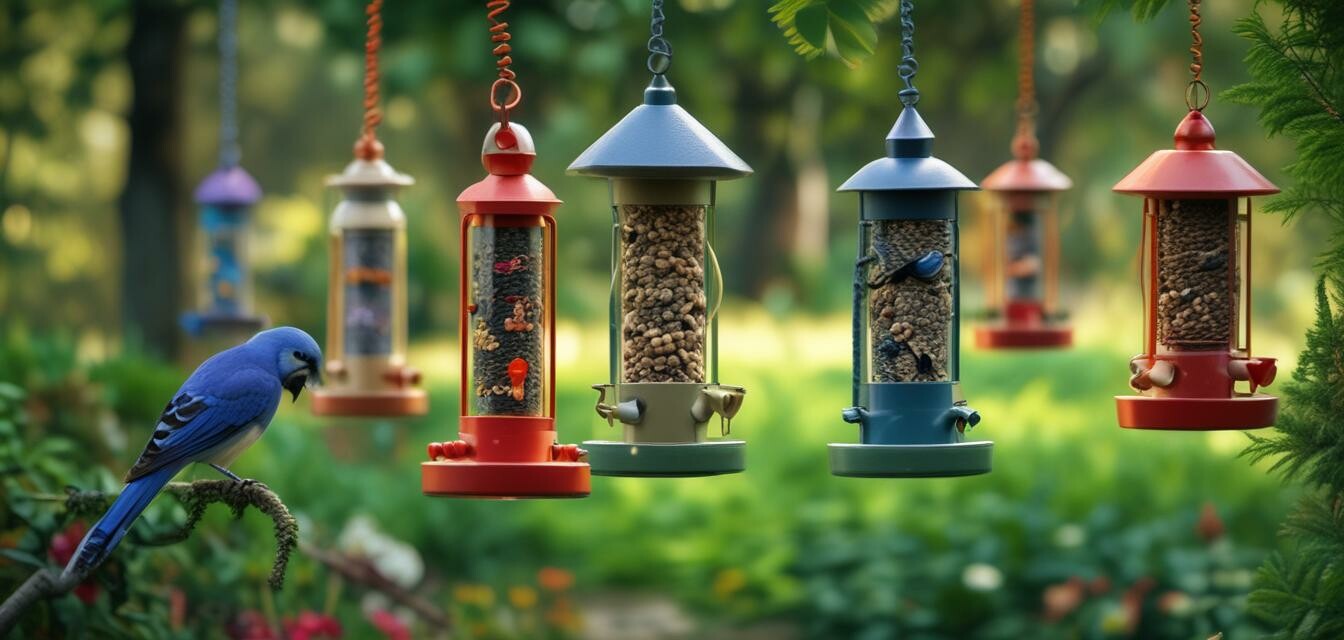
Attracting Specific Bird Species with Targeted Feed
Key Takeaways
- Different bird species have unique dietary preferences.
- Selecting the right seeds and feeders can significantly increase your chances of attracting specific birds.
- Providing additional food sources, like suet and nectar, enhances your bird-friendly environment.
- Understanding seasonal behaviors can help tailor your feeding strategy.
Attracting birds to your yard can be a rewarding experience, especially when you learn how to entice specific species. Choosing the right types of food coupled with effective feeding strategies is essential in achieving your goal. In this article, we’ll explore targeted feeding methods to help you draw in the birds you love.
The importance of targeted feeding
Not all birds are created equal, and their dietary requirements reflect this diversity. Understanding what each species prefers is the key to creating a bird-friendly environment. Here are several factors to consider:
- Feeding behaviors: Some birds prefer to forage on the ground, while others are more comfortable feeding in trees or on feeders.
- Seasonal diets: Birds may change their diets based on the season and available resources.
- Regional preferences: Different areas may attract different bird species based on local flora and fauna.
Common bird species and their preferences
Several popular bird species frequently visit feeders, each with their unique feeding preferences. Below is a table summarizing common bird species and the types of food they prefer:
| Bird Species | Preferred Food | Best Feeders |
|---|---|---|
| American Goldfinch | Thistle seeds | Nylon mesh and tube feeders |
| House Sparrow | Seed mixes, millet | Platform feeders |
| Blue Jay | Peanuts, sunflower seeds | Platform or hopper feeders |
| Cardinal | Sunflower seeds, safflower seeds | Hopper and platform feeders |
| Hummingbird | Nectar | Nectar feeders |
Choosing the right seeds and feeders
To maximize your chances of attracting specific bird species, it's crucial to select the appropriate seeds and feeders. Here are some tips to get you started:
1. Seeds
Seeds vary in popularity among different bird species. Here's a handy list of seeds to consider:
- Nyjer Seeds: Ideal for finches and canaries.
- Sunflower Seeds: Attracts a variety of birds—including cardinals, chickadees, and jays.
- Safflower Seeds: Appeals to cardinals and is disliked by squirrels.
- Millet: Favored by sparrows and doves.
- Peanut Pieces: Attracts jays and woodpeckers.
2. Feeders
Selecting the right feeder is equally important. Here are some common types you might consider:
- Tube Feeders: Good for small seeds such as Nyjer.
- Platform Feeders: Versatile and can be used with various seeds.
- Hopper Feeders: Ideal for larger seeds.
- Nectar Feeders: Essential for attracting hummingbirds.
Feeding Strategies Throughout the Year
Your feeding strategies might need to evolve throughout the year. Based on the seasons, consider the following adjustments:
| Season | Feeding Strategies |
|---|---|
| Spring | Offer protein-rich food like mealworms for feeding young birds. |
| Summer | Focus on fruits and nectar to attract hummingbirds and orioles. |
| Autumn | Provide a variety of seeds as birds prepare for migration. |
| Winter | Supply high-energy seeds and suet to support birds in cold weather. |
Enhancing your bird-friendly environment
In addition to feeding, creating a welcoming environment will help attract specific species:
- Plant native vegetation: This provides natural food sources and cover.
- Add water sources: Bird baths or small fountains serve as hydration points.
- Provide shelter: Nesting boxes and natural structures can create safe havens.
Pros
- Increases variety in avian visitors.
- Enhances the bird-watching experience.
- Encourages biodiversity in your garden.
Cons
- Specific feeding may require more effort and planning.
- Cost of multiple feed types and feeders can add up.
- Not all areas can support diverse bird species.
Conclusion
Attracting specific bird species requires knowledge of their preferences and thoughtful planning. By choosing the right seeds, feeders, and enhancement strategies, you can create a welcoming environment for your favorite birds. Regularly observing their habits will allow you to adapt your approach and enjoy the joyful sights and sounds they bring to your space.
For more tips on creating a bird-friendly environment, check out our other articles on Expert Tips. Explore ideas on Bird Baths, Bird Feeders, and Bird Seed to enhance your bird-loving experience.